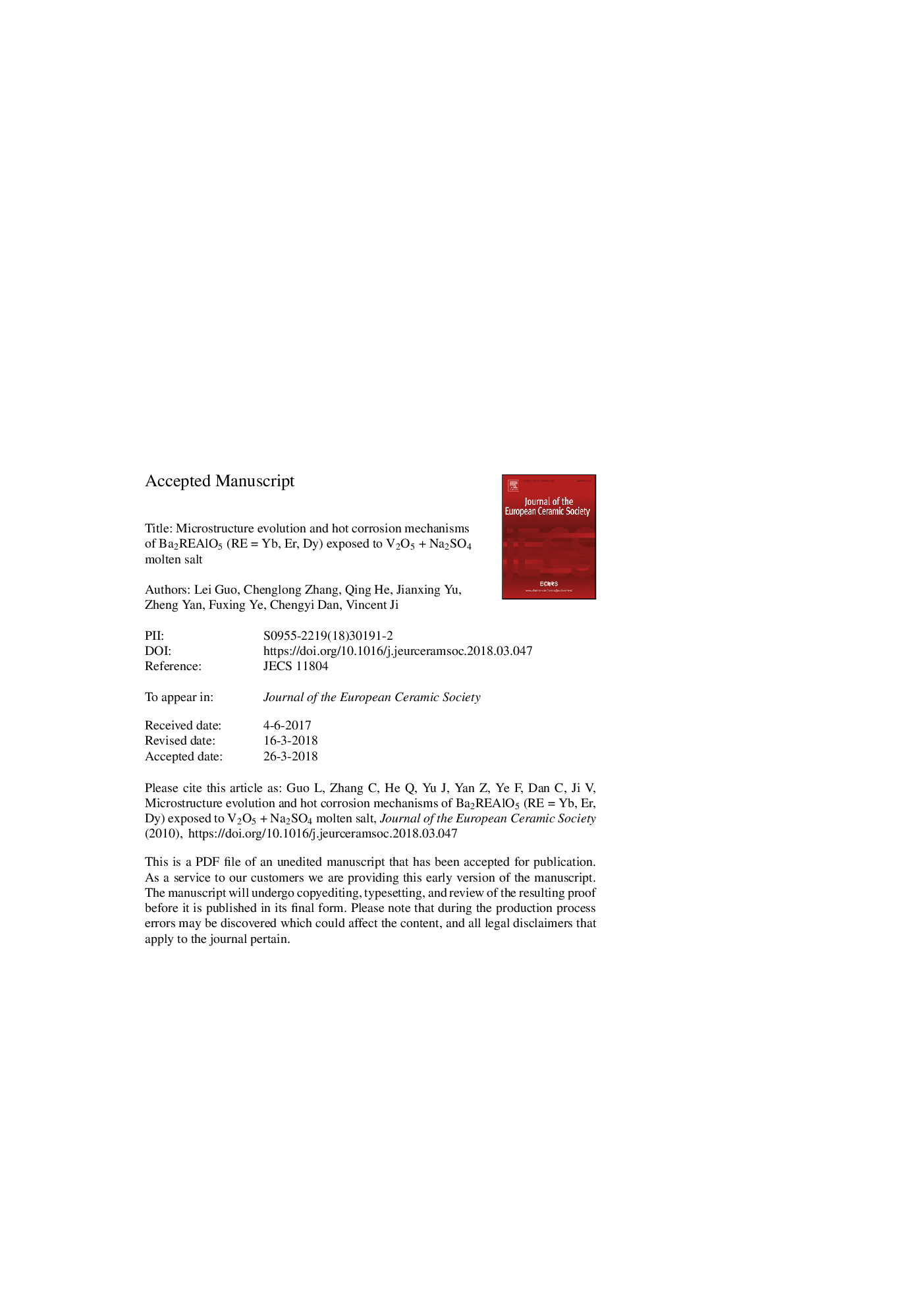| Article ID | Journal | Published Year | Pages | File Type |
|---|---|---|---|---|
| 7898089 | Journal of the European Ceramic Society | 2018 | 40 Pages |
Abstract
Ba2REAlO5 (REâ¯=â¯Dy, Er, Yb) powders were synthesized by a solid state reaction method, followed by cold pressing and sintering to produce pellets for hot corrosion tests. When exposed to V2O5â¯+â¯Na2SO4 molten salt at 900â¯Â°C and 1000â¯Â°C for 4â¯h and 20â¯h, REVO4, Ba3(VO4) 2 and BaAl2O4 formed as corrosion products due to chemical interactions between the ceramics and the molten salt, which were temperature and time independent. After the hot corrosion tests at 1000â¯Â°C, continuous, dense reaction layers with a thickness of â¼80â¯Î¼m formed on the sample surfaces, which had an effective function on suppressing further penetration of the molten salt. The hot corrosion mechanisms of Ba2REAlO5 are proposed based on Lewis acid-base rule, phase diagrams and thermodynamics. From a thermodynamics perspective, the molten salt directly reacting with Ba2REAlO5 is difficult compared with Yb2O3, Al2O3 and BaO.
Related Topics
Physical Sciences and Engineering
Materials Science
Ceramics and Composites
Authors
Lei Guo, Chenglong Zhang, Qing He, Jianxing Yu, Zheng Yan, Fuxing Ye, Chengyi Dan, Vincent Ji,
